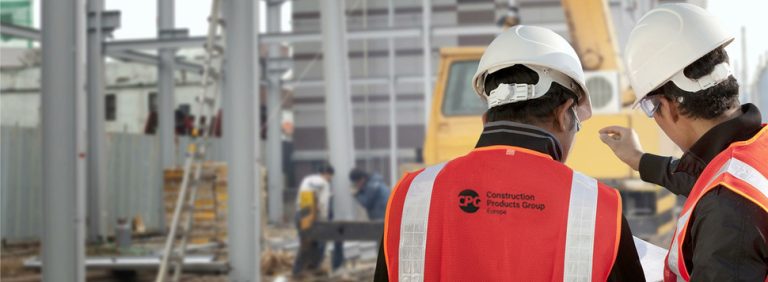Safety standards in the construction industry have evolved dramatically over the past few decades. With the incorporation of advanced technology, innovations in personal protective equipment (PPE), and the ongoing updating of safety regulations, these standards have become integral elements of project planning. This article delves into how the evolution of safety standards impacts the planning and execution of construction projects. Historical Overview: Safety Standards in Construction From the Industrial Revolution, construction has consistently been one of the riskiest industries for workers. Early construction work was characterized by high injury rates, inadequate protective gear, and little to no regulations. Over time, however, society recognized the importance of workers’ safety and began to implement regulations and standards. The establishment of organizations such as the Occupational Safety and Health Administration (OSHA) in the United States in 1970 represented significant leaps in prioritizing worker safety. Similar bodies were created globally, ensuring construction safety became a universal concern. This era marked the beginning of the integration of safety standards into project planning. The Evolution of Safety Standards Safety standards in construction have progressively become more sophisticated and stringent. This evolution has been driven by technological advancements, emerging safety theories, and an increasing understanding of human factors in accidents. For instance, in the early days, safety regulations focused on providing workers with rudimentary PPE like helmets and gloves. Today, the technology has evolved to include smart PPE, which integrates advanced technology like biometric monitors and augmented reality to enhance safety. Moreover, there’s been a shift in perspective. Safety practices have moved from a reactive approach — dealing with accidents after they happen — to a proactive one, focusing on prevention. Now, the focus is not just on safety but health as well, with mental health and ergonomic issues getting increased attention. Impact on Project Planning The evolution of safety standards has fundamentally changed the approach to project planning in construction. It’s no longer seen as an additional burden or cost but a necessity that can enhance efficiency and productivity. Below are some key ways the evolving standards impact project planning. Safety Integration in All Phases Safety measures are now integrated into all stages of project planning. From the pre-planning phase to design, construction, and maintenance, safety standards dictate various aspects of project execution. The concept of “Safety by Design” is now a cornerstone in the industry, which stresses on integrating safety measures right from the design stage. Cost Estimation In the past, safety measures were often seen as cost-increasing factors. However, with the evolution of safety standards, it’s now recognized that the costs incurred in implementing safety measures are significantly less than the potential cost of accidents, both in terms of financial impact and damage to the company’s reputation. Therefore, modern cost estimation in construction project planning now factors in the cost of safety measures. These might include the cost of advanced PPE, safety training, installation of safety infrastructure, and ongoing safety audits. Time Scheduling Safety considerations can affect project scheduling. Projects now need to include time for safety training, safety checks, and maintenance of safety equipment. The time required for safe working practices, which may be longer than less safe alternatives, must be accounted for in the schedule. Furthermore, preventing accidents through proactive safety measures can avoid unforeseen work stoppages and delays, contributing to better adherence to the schedule. Risk Management The evolution of safety standards has influenced the risk management approach in construction project planning. As safety risks can cause significant project disruptions, they are now identified, assessed, and mitigated in the initial stages of project planning. For instance, any hazardous activities are identified during the design phase itself, and steps are taken to mitigate them. Modernized Project Planning and Safety Standards Incorporating safety standards into project planning is not just about reacting to changes in regulations or technologies. It is about a fundamental shift in how project planning is conducted. Outdated practices, like physical paperwork planning, whiteboard outlines, or the classic construction site go-to: sticky note walls, are no longer sufficient. These methods lack the dynamic nature needed in today’s construction industry, especially with the continual evolution of safety standards. Traditionally, safety planning could be as simple as outlining areas on a site map where hard hats should be worn, or sketching potential danger zones on a whiteboard. However, these rudimentary methods have substantial drawbacks. They do not easily allow for changes, are prone to accidental erasure or damage, and rely heavily on manual updating. In the fast-paced environment of a construction project, such methods can lead to safety measures being overlooked or improperly implemented. Embracing Digital Tools for Safety Planning The advancement of digital technologies offers a solution to these issues. Digital planning tools provide a more secure, organized, and flexible method of project planning. Such tools allow project planners to integrate safety standards into their project plans seamlessly. For instance, with digital planning tools, safety measures can be built into the project plan from the start. Safety zones can be delineated on digital maps, and safety requirements for each task can be included in digital project schedules. As the project progresses, these safety measures can be updated in real time, ensuring that they remain relevant and effective. Digital tools also offer a way to centralize safety information, making it easily accessible for everyone involved in the project. Workers can consult the digital plan at any time to refresh their understanding of the safety measures in place. This helps ensure that safety standards are understood and followed throughout the construction process. Furthermore, digital planning tools can integrate with other technological advancements in safety, such as smart PPE. Data from these devices can be fed into the digital plan, providing a continuous stream of information on safety conditions on the site. This allows project planners to respond swiftly to any emerging safety issues, reinforcing the shift towards a proactive approach to safety. Examples of Digital Planning Integration A great example of digital planning tools enhancing safety planning is the use of Building










